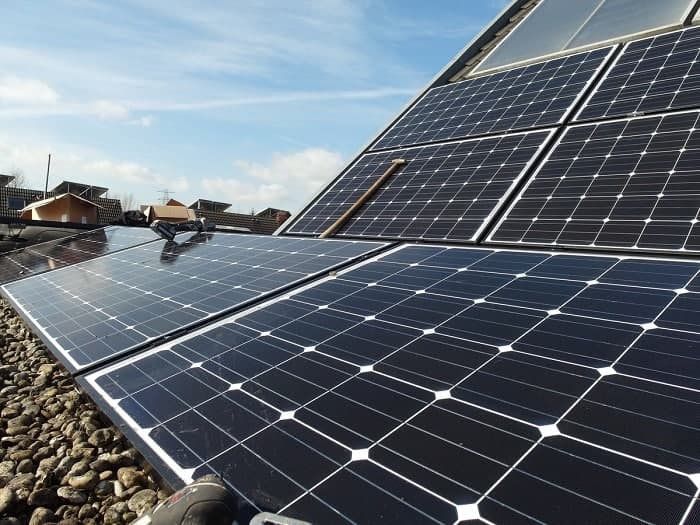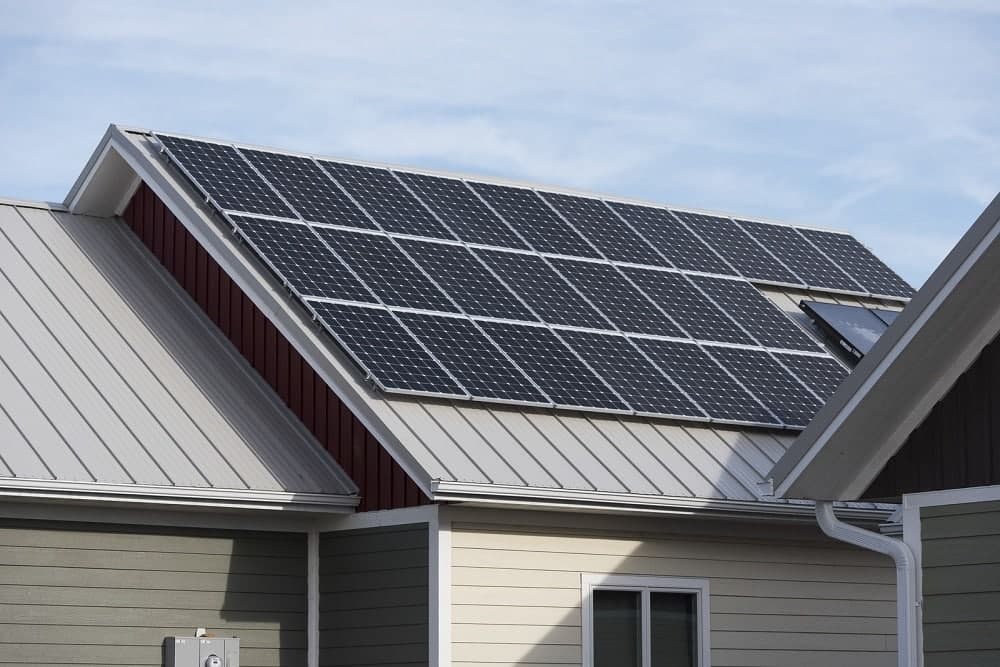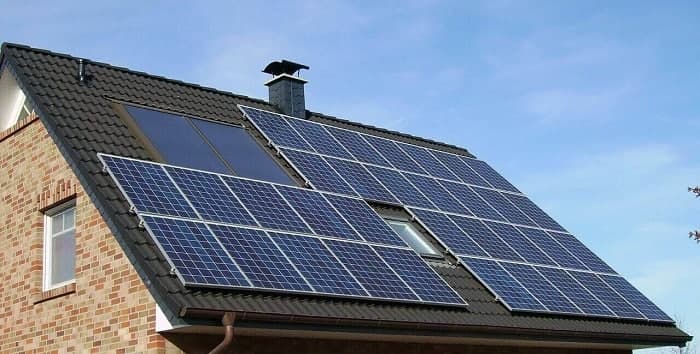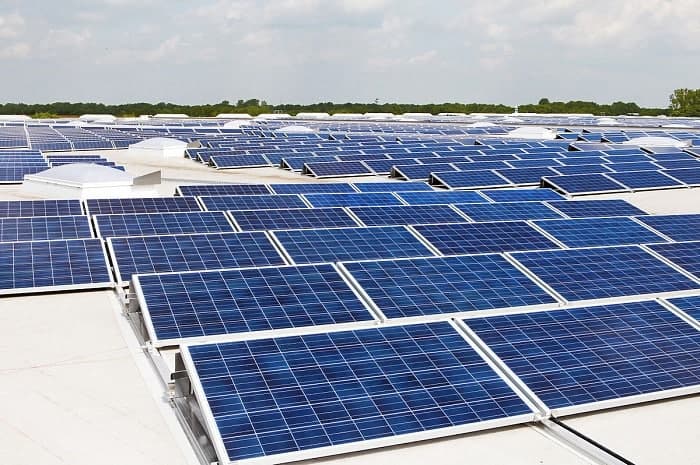Welcome to Linquip Blog. Today we want to deliver some information about different types of solar panels. So as usual and firstly, we need to have a definition of what a solar panel is and what it does. In the next step, we will delve into the different types it has and we will explain in detail, the performance of each one of them. Then, we have a comparison between these three types that would be very interesting for anyone about to buy solar panels to establish their solar system.
Our team gathered all of the necessary information on this topic to eliminate the need for reading diverse content on other websites. Stay with us until the end to find the answer to your question on this topic. Let us start with some basic definitions.
What Is a Solar Panel?
Solar energy begins with the sun. Solar panels or as they are also called PV panels are used to convert light from the sun, which is composed of particles of energy called photons, into electricity that can be used to power electrical loads.
Solar panels can be used for a wide variety of applications including remote power systems, telecommunication equipment, remote sensing, and for the production of electricity for residential and commercial solar electric systems.
In this article, we’ll explore the differences between the different types of solar panels to help you decide which ones should go on your roof.
How Many Types Does a Solar Panel Have?
Most of the solar panels on the market used for residential solar energy systems can fit into three categories: monocrystalline, polycrystalline, and thin-film solar panels. Each of these types of solar cells causes solar panels to have different characteristics. In the following, we are going to discuss these characteristics and talk about the pros and cons of each of these three types of solar panels.
As we said before, the three types of solar panels are monocrystalline, polycrystalline, and thin-film solar panels. Each of these types of solar cells is made uniquely and has a different aesthetic appearance. Let’s begin with the monocrystalline solar panels.
-
Monocrystalline
The oldest and of course the most developed type of solar panel is Monocrystalline solar panels. These solar panels are made from about 40 monocrystalline solar cells. These solar cells are made from pure silicon. In the manufacturing process, a silicon crystal is placed in a vat of molten silicon. Then, the crystal is pulled up out of the vat very slowly which allows for the molten silicon to form a solid crystal shell around it called an ingot. The ingot is then sliced thinly into silicon wafers. The wafer is made into the cell, and then the cells are assembled to form a panel that we call it monocrystalline solar panel.
Because of the way sunlight interacts with pure silicon, Monocrystalline solar cells appear black. But the designs and colors for the back sheets and frames of the monocrystalline solar cells are various. The monocrystalline cells are shaped like a square with the corners removed, so there are small gaps between the cells.
-
Polycrystalline
Polycrystalline solar panels are a newer version of monocrystalline solar panels, but they are rising quickly in popularity and efficiency. Just like monocrystalline cells, polycrystalline cells are made from silicon. But polycrystalline cells are made from fragments of the silicon crystal melted together. During the manufacturing process, the silicon crystal is placed in a vat of molten silicon. Instead of pulling it out slowly, this crystal is allowed to fragment and then cool. Then, once the new crystal is cooled in its mold, the fragmented silicon is thinly sliced into polycrystalline solar wafers. These wafers are assembled to form a polycrystalline panel.
Polycrystalline cells are blue because of the way sunlight reflects on the crystals. Sunlight reflects off of silicon fragments differently than it does with a pure silicon cell. Usually, the back frames and frames are silver with polycrystalline, but there can be variations. The shape of the cell is square, and there are no gaps between the corners of the cells.
-
Thin-Film
The newest generation of solar panels in this industry is thin-film solar panels. The most distinguishing feature of this type of solar panel is that they aren’t always made from silicon. They can be made from a variety of materials, including cadmium telluride, amorphous silicon, and Copper Indium Gallium Selenide. By placing the main material between thin sheets of conductive material with a layer of glass on the top for protection, these solar cells are created. The amorphous silicon panels do use silicon, but they use non-crystalline silicon and are also topped with glass.
As their name suggests, thin-film panels are easy to identify by their thin appearance. This type of solar panel is approximately 350 times thinner than those using silicon wafers. But the frames of the thin-film panels can be large sometimes, and that can make the appearance of the entire solar system comparable to that of a monocrystalline or polycrystalline system. Thin-film cells can be black or blue, depending on the material they were made of.
A Brief Comparison Between Three Types of Solar Panels
But the differences in manufacturing and appearance of different types of solar panels are only a part of the factors influencing the selection. there are some differences in how each of the types of solar cells performs. The key categories are efficiency and price. Here’s how each type of solar panel performs in efficiency and affordability as well as other factors to consider.
Efficiency
Efficiency is how much energy the solar panel can produce from the amount of sunlight it receives. Essentially, efficiency determines how much power a solar panel can produce from a specific amount of received sunlight. The most efficient solar panel is the monocrystalline panels. Monocrystalline can reach over 20 percent efficiency. On the other hand, polycrystalline panels can usually only reach 15 to 17 percent efficiency. This gap between the two panels may be closing in the future as technology improves to make polycrystalline panels more efficient. The least efficient solar panel is the thin film. Thin film usually has lower efficiency and produces less power than either of the crystalline options with efficiency at only approximately 11 percent. The power capacity of a thin-film panel can vary though because there isn’t a standard size, and some models could produce more power than others.

Cost
Price can make or break a solar decision, and the types of solar cells you choose are one of the factors that affect the price the most. The cheapest solar panels are thin-film panels because they can be manufactured at the lowest cost. Cadmium telluride solar panels are the cheapest ones on the market, but the CIGS can be more expensive. Thin-film frames are usually lighter, so you can often save on installation costs. On the other hand, monocrystalline is the most expensive solar panel option right now. Manufacturing pure silicon can be expensive, and the panels and frames are heavy, leading to higher installation costs. Polycrystalline panels are developed to reduce the cost of solar panels, and they are usually more affordable than monocrystalline. But this gap between monocrystalline and polycrystalline panels may close as innovators discover more efficient ways to manufacture monocrystalline solar cells.
Other Factors
Besides cost and efficiency, there are several other factors to consider when choosing solar panels. One factor is the temperature coefficient. Monocrystalline and polycrystalline solar panels typically have a temperature coefficient of around -0.3% per °C to -0.5% per °C. Thin-film panels have coefficients closer to -0.2% per °C.
What this means is that as the temperature rises, certain types of solar panels will produce more power than others. This is especially important to consider in an area like North Carolina, where the temperature highs can be significant.
Another factor to consider is the fire rating, which can vary based on the type of roof you have and the type of panel you choose. Fire isn’t the only natural disaster that can strike your roof, so you’ll also want to consider hail ratings. Most monocrystalline and polycrystalline panels can withstand 25mm falling at approximately 50 miles per hour, but the exact rating can vary and can affect the lifespan of your solar system. You also may want to consider finding heterojunction solar cell technology (HJT) for your system that combines monocrystalline silicon wafers with amorphous silicon. HJT has peak efficiency with the lowest temperature coefficient and no Light Induced Degradation (LID). Finally, you need to consider LID because degradation of efficiency can affect the amount of energy you’re able to produce.
All of these various factors are considered by our engineers when designing and recommending a solar PV system. We look at the overall system lifecycle and efficiency not just in ideal scenarios but in all conditions that your solar PV system will be subjected to.
It is a great idea to have a basic understanding of how solar panels work, but we understand it can be overwhelming to choose the proper type of solar panels. Our solar experts at 8MSolar are available to assess your needs and help you make the best decision for your unique needs.
Conclusion
In this article, we tried to give you all the essential information about the different types of solar panels. we brought the basic definition of what a solar panel is and then we moved to the different types and their privileges. In the 3rd section, we delved into other factors such as efficiency and cost and other characteristics such as the rate of temperature distinguishing these types.
If you have any experience using any type of solar panels and know more about it, we will be very glad to have your opinions in the comments on our website Linquip. Moreover, if you have any questions about this topic, you can sign up on our website and wait for our experts to answer your questions. Hope you enjoyed reading this article.
Buy Equipment or Ask for a Service
By using Linquip RFQ Service, you can expect to receive quotations from various suppliers across multiple industries and regions.
Click Here to Request a Quotation From Suppliers and Service Providers
Read More on Linquip
- Types of Solar Energy: Learn the Basics, Get the Most Out of It!
- What Are Solar Farms? All You Need to Know About Solar Parks
- Efficiency of Solar Panels
- 10 Main Types of Energy Storage Methods
- Which Type of Solar Panel Is the Best?
- Non-techie Guide To The Difference Between Solar Cell and Solar Panel
- Top Solar Panel Companies and Manufacturers in the US
- The Ultimate Guide to Solar Panel Calculation: Harness the Power of the Sun with Linquip
- Calculating Solar Panel Wattage: A Comprehensive Guide by Linquip
- How Much Do Solar Panels Cost Per Square Foot?
- How to Check Solar Panel Output? An Essential Guide
- How Much Energy Does a Solar Panel Produce?





